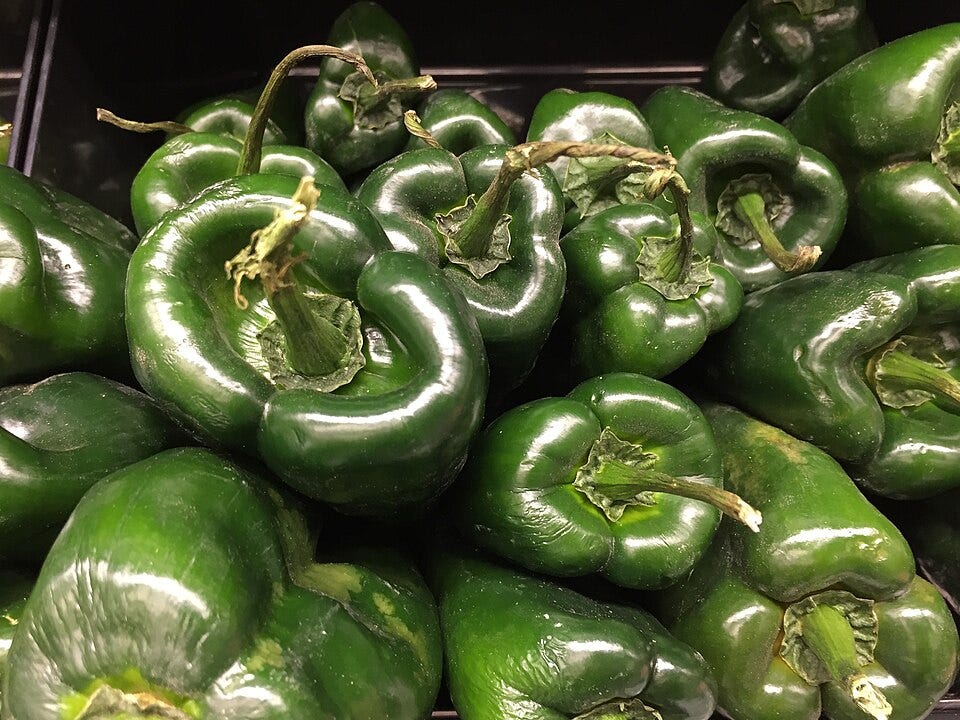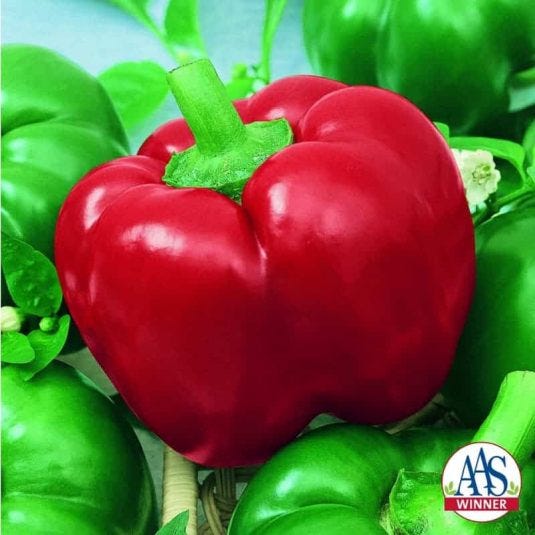Things to Do in the Garden This Week, May 5-11, 2025
Plant, plant, plant! (And pull weeds)
Not-So-Hot Pepper Varieties, Part 2
As promised, this is Part 2 of what we started talking about in Friday’s “Beyond the Garden Basics” newsletter, “Peppers Worth a Try.” In Friday’s spicy screed, Sacramento County Master Gardener Gail Pothour told us about her favorite pepper varieties to grow.
Today, it’s Diane Blazek’s turn. Diane is the Executive Director of the All America Selections, which conduct North American plant trials of new introductions. AAS winners for the home garden have been named each year since 1933.
The subject of the latest winners took an interesting turn in our chat back in Episode 379, “AAS Award-Winning Plants for 2025” on the Garden Basics podcast. We started talking about “Not-So-Hot Peppers”. Here’s a portion of the transcript from that episode:

Farmer Fred:
I've got a question from a listener who has an aversion to hot peppers and was looking for a pepper to include in a recipe that called for Poblanos. And Poblanos are on the low side as far as the Scoville scale goes (1000-1500). Maybe before we get started on the question, we should explain the Scoville scale for people. This is a measurement of heat of peppers that was designed, I think, the guy owned a pharmacy back in 1900 or sometime like that. And it was a matter of adding water to each sample that was tasted to determine the heat?
Diane Blazek:
Well, I remember when I was first reading about this, it's interesting that it was so subjective, you know, because one person's determination. But, yes, that's what he was doing was setting up a scale for Scoville units.
Farmer Fred:
Exactly. And the higher the number, the more heat there is. Right. And another thing, too, if you're looking at a pepper catalog and you're looking for some low heat peppers, and this gets back to the question that I had from a listener who had a recipe that called for poblanos and wanted maybe some other choices of low heat peppers that wouldn't burn their mouth. So we're probably looking at peppers that are under 1,000 or 1,500 Scoville units. The problem is, as I said about these catalogs, they can vary widely in what they say the Scoville unit scale is for a particular pepper. So let your taste buds be your guide. And also remember that peppers can change. The longer they're in the garden, the more stress they're under. If they are hot peppers, they'll get hotter if they're stressed, if there is a drought, if they're not fed correctly. if you do get that heat wave that gets over 100 degrees for a couple of weeks in a row. So basically, buyer beware on that one. Let's talk about some of the AAS winners over the years that would fit that category of low heat peppers. And in my own research, besides the Poblano, I found things like the Cubanelle and the Aji Dulce, also known as the cachucha pepper, which are pretty low (Cubanelle: 100-1000 Scoville Units; Aji Dulce: 500-1000 Scoville Units). But you had one not too long ago that was an AAS winner that I really liked. I remember growing it, it was called the Mexibell.
Diane Blazek:
Yeah, the Mexibell. It actually looks more like a sweet pepper, but does have just a little bit of heat. And it's a nice red pepper, you know, if you let it mature to red. So that would be a good choice. I think the Mariachi would be another one. Now that one does go up to maybe 1,500 or 2,000 Scoville Units. Now that's not a bell pepper. That's a little conical shaped pepper, but that would be a good alternative.
Keep reading with a 7-day free trial
Subscribe to Beyond The Garden Basics to keep reading this post and get 7 days of free access to the full post archives.


